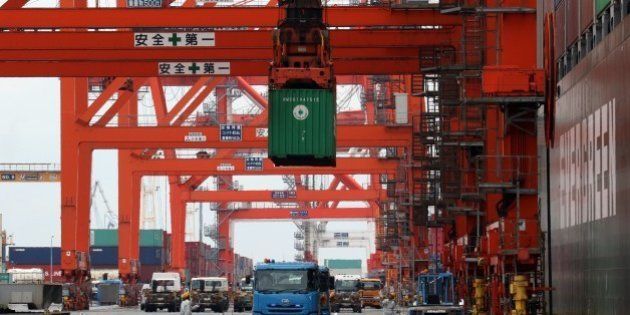
Latest economic figures bring mixed news, but show that exporters are facing a tough time.
First, the good news. India's trade deficit narrowed to a three-month low in May, helped by lower oil prices. The trade deficit is now $10.4 billion, its lowest since February.
And now the bad news: India's exports are down for a sixth straight month, the longest such streak since 2009. This would raise pressure on Prime Minister Narendra Modi's government to raise demand within the country in order to push growth rates.
Overseas shipments fell 20.2 percent in May from a year earlier. Growth in goods exports, both in terms of value and volume, has been steadily slowing since 2012, reflecting local bottlenecks that have rendered Indian firms uncompetitive.
A report published by HSBC last month showed that electricity shortages and poor rail, road and port connectivity are compounding the problems Indian exporters are facing amid weak global demand as well as a relatively strong rupee.
Normally this would have widened the trade deficit. That did not happen because oil prices have stayed low, and less gold was imported. Gold imports are down by nearly 23 percent from April to $2.4 billion last month. And oil imports, which account for almost a third of India's total imports, is down 41 percent in May from a year earlier.
In other words, India's trade deficit will stay within acceptable limits despite a fall in exports as long as global commodity prices stay low. But eventually, the export bottlenecks need to be removed to make India competitive. "Fall in exports is becoming a trend and it is really worrying," said Anupam Shah, chairman of the Engineering Exporters' body, EEPC India. "Indian exporters need significant stimulus to become competitive."
The wholesale price index is down 2.36 percent in May from a year earlier. That came after a 2.65 percent decline in April. However, the Reserve Bank follows Consumer Price Index to measure inflation, and that was up 5.01 percent in May, reducing chances of a rate cut. But a decision on that will depend on the monsoon and how it impacts food prices.
(With agency inputs)



Contact HuffPost India